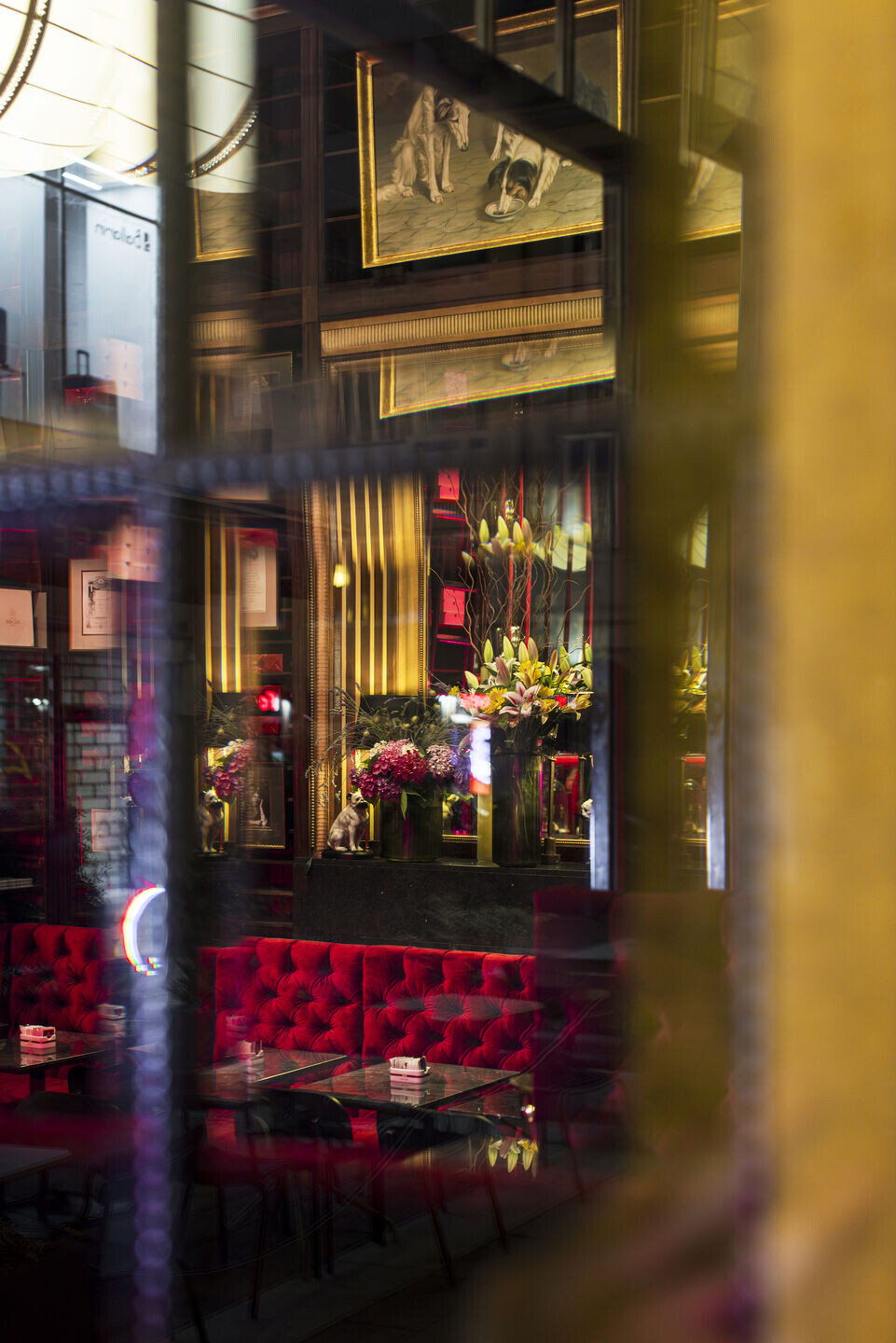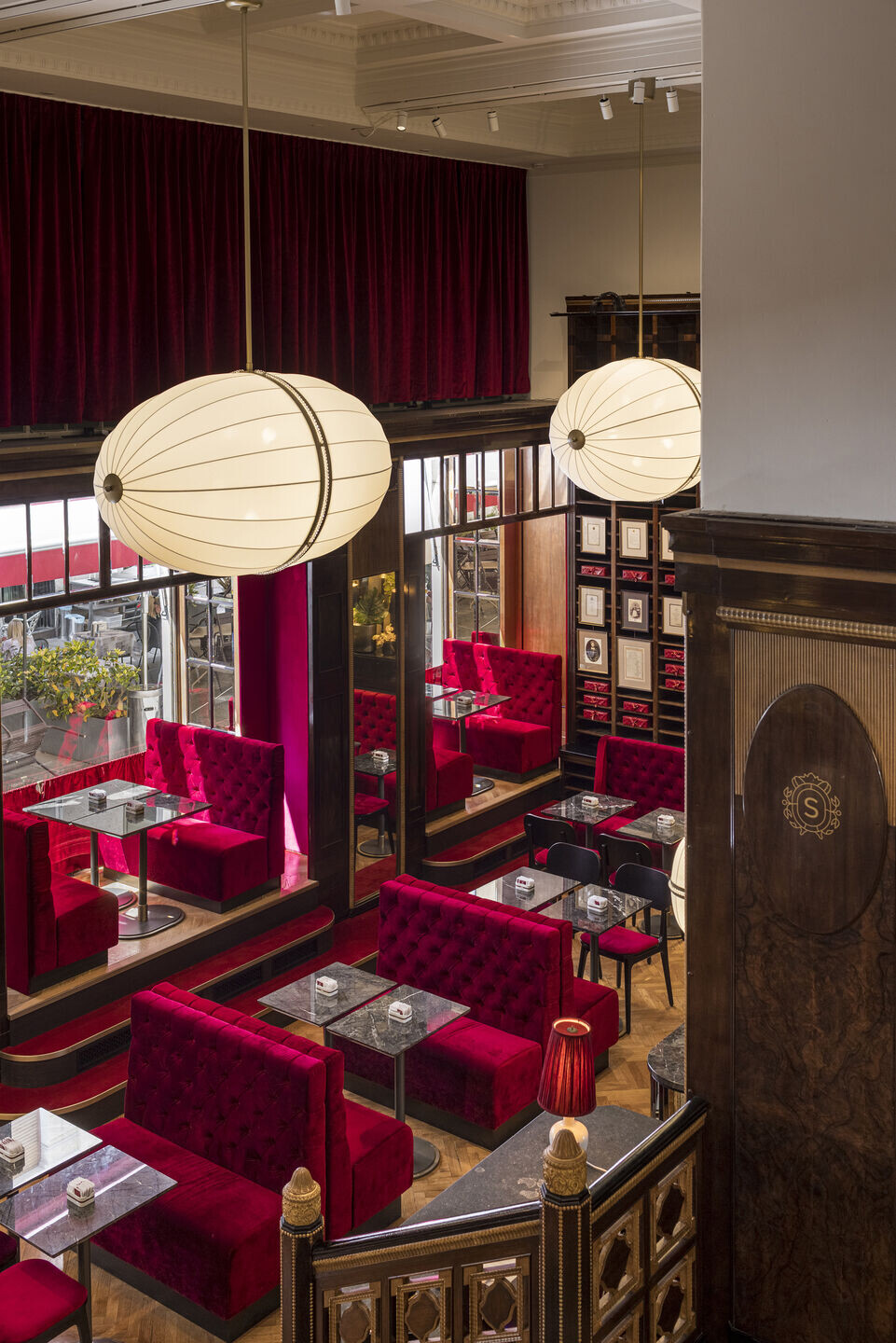Located in the lively pedestrian zone just a stone’s throw from the Corso Italia right in the centre of Trieste, the new Caffè Sacher Trieste has opened its doors! Proprietor Dizzi Alfons, BWM architect Erich Bernard and interior stylist Peter Weisz brought the famous Sachertorte to Trieste and saved the heritage building, where they put a lot of thought and care into integrating the new elements into the restored original furnishings from 1912.
Thanks to its historic interior, the new Caffè Sacher is one of Trieste’s most exquisite commercial properties. In the lively pedestrian zone in the very heart of the city, just a stone’s throw from the Corso Italia, BWM Designers & Architects are converting the former Rosini shoe shop into Caffè Sacher Trieste, in collaboration with Aulo Guagnini, Atelier Peter Weisz and interior designer Evi Märklstätter/Studio 13 Crad. The interior design draws its inspiration from the Sacher Eck and Salon Sacher cafés – also designed by BWM Designers & Architects – in the world-famous Hotel Sacher in the centre of Vienna and combines it with the meticulously restored original furnishings from 1912.

Sacher is one of the few traditional Austrian brands that are famous beyond Austria’s borders. “Italians know and love the Sacher brand. And Trieste is concentrated European history, with much shared heritage with Vienna. So these two things seem predestined for each other,” says proprietor Dizzi Alfons, explaining the reasoning behind his idea to open Caffè Sacher Trieste.
Preserving historical elements
The café is housed in a heritage building that dates back to 1912. The magnificent Palazzo RAS, the former headquarters of the Riunione Adriatica di Sicurtà insurance company, was built by the famous Triestine architects Arduino and Ruggero Berlam. Besides a cinema and a large department store (currently, a COIN), the Palazzo RAS also housed the “Fassel American shoe store” belonging to the Viennese shoemaker Berthold Fassel (Fratelli Fassel – Vienna, Prague, Trieste, Carlsbad, Budapest, Lviv and Innsbruck). The store’s furnishings came from the Vienna workshop of furniture manufacturer Heinrich Röhrs in 1912. Clearly in the style of the Vienna Secession, they are said to have been based on designs created by a Viennese architect. In the 1960s, the interior was redesigned, and new fixtures were installed; however, despite having been covered up, the original furnishings remained almost fully intact and have been carefully exposed and restored in collaboration with the local heritage protection authority.

“We always carry out a precise historical analysis before starting the design process,” Erich Bernard, BWM designer/architect and monument protection expert, explains. “This was no different here. And as regards our design concepts, we set great store by being respectful of and in harmony with the existing elements.” Accordingly, for this project, it was very important to Erich Bernard to do extensive research into the former premises of the Rosini shoe shop and - through Aulo Guagnini - in the historical archives of Trieste and Allianz. To support the preservation of this exquisite property, BWM Designers & Architects even decided to invest in Caffè Sacher Trieste themselves by buying shares.
Task
A new design for heritage-protected business premises, conversion into a Sacher café and shop in the heart of Trieste, with seating for more than 50 guests in an Proprietor/licensee: Dizzi Alfons Interior design: BWM Designers & Architects Inte85m2 space.
Status: Completion 04/2023
Client: Dizzi Alfons
BWM Team: Erich Bernard, Rita Guggenberger, Christiane Geymayer
Image credit: Photo: Giuliano Koren
Participants
Proprietor/licensee: Dizzi Alfons
Interior design: BWM Designers & Architects
Interior styling: Atelier Peter Weisz & interior designer Evi Märklstätter/Studio 13 Crad
Architectural/structural design, site management and safety coordination: Aulo Guagnini






















